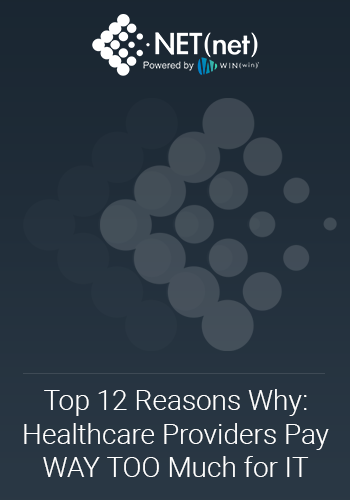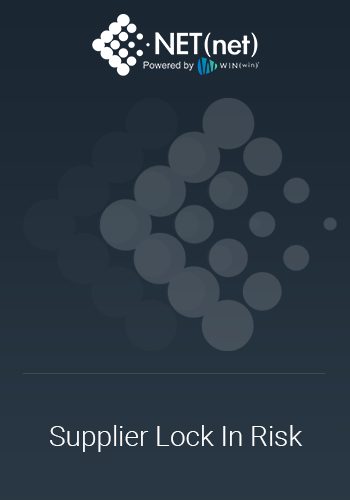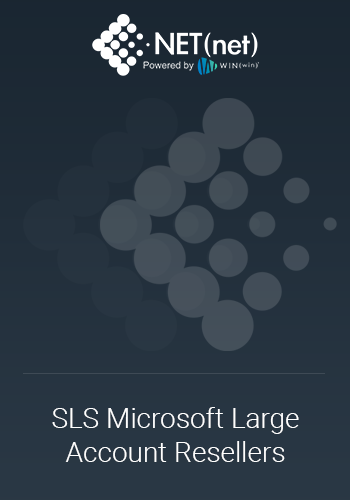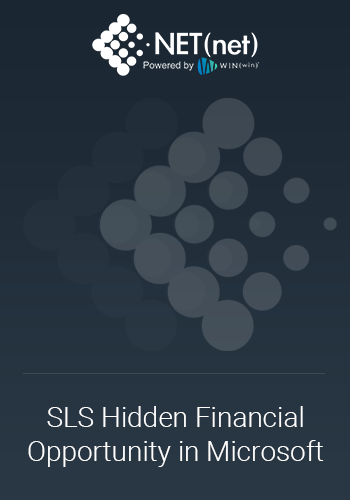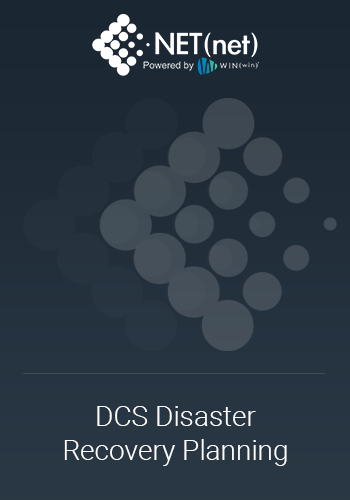Preface
While cloud adoption has been growing rapidly since before the pandemic, in recent years, there are signs of a slowdown in the overall rate of growth. Several factors contribute to this trend:
- Price shock: As client organizations migrated their workloads to the cloud, they often underestimated the costs involved. While the cloud offers scalability and flexibility, it is not always the most cost-effective option, particularly for certain types of workloads. Some clients experience price shock when they receive their cloud bills, especially if they haven't properly optimized their resources, realized the implications of data movements, or fully understood the pricing models. See NET(net)'s recent blog on this topic
- Workload suitability: Not all workloads are well suited for cloud deployments. Certain applications, such as those with high data transfer requirements, performance-sensitive workloads, or compliance-sensitive workloads, may be more cost-effective or better managed on-premises. Client organizations are realizing that a one-size-fits-all approach to the cloud may not be optimal, leading them to repatriate certain workloads back to on-premises environments.
See NET(net)’s recent blog on this topic - Complex Migration Challenges: Migrating existing applications and workloads to the cloud can be a complex and resource-intensive process. Client organizations often face challenges in rearchitecting or refactoring their applications, dealing with data migration, ensuring security and compliance, and managing dependencies. These challenges can lead to delays and difficulties, causing some organizations to repatriate workloads instead of fully embracing the cloud. See NET(net)’s recent blog on this topic
- The Nascent Nature of Cloud Cost Optimization Services: Despite the ability to analyze cloud workloads and empirically demonstrate more cost-effective countermeasures (many with outright engineering benefits), cloud cost optimization has not been able to stem the tide of eventual workload repatriations back on-premises when it comes to mitigating cost overruns resulting from the challenges enumerated above, among others. This is partly due to culture challenges and points of organizational friction between FinOps and DevOps, often resulting in a stalemate regarding potential changes that can result in cost savings, with the tie going to the engineers who are able to ‘tech-splain’ their rationality in such a way that makes it difficult for the bean counters to argue the merits of the counterpoints. Imagine a financial expert trying to explain the engineering benefits and cost advantages of bamboo (as compared to steel) with a room full of construction workers. It's unlikely that even the most compelling arguments about tensile strength will convince them to switch from rebar. Galileo got ridiculed for suggesting the earth revolved around the sun. Darwin was considered absurd to suggest the theory of evolution. Nikola Tesla was laughed at for suggesting power could be transmitted wirelessly. It’s not all that different for FinOps teams today when talking to DevOps teams about cost-savings ideas. See NET(net)’s recent blog on this topic
Introduction – Data Gravity
If cloud solution providers want to reverse the recent trend of workload repatriation, one of the critical challenges they will have to solve is that of Data Gravity. Data Gravity and the associated costs of data egress can be a significant challenge. Workloads that involve large amounts of data transfer out of the cloud may face high egress charges, making it more cost-prohibitive to keep those workloads in the cloud.
As a result of these and other factors, some of which are illuminated above, there is a trend that reflects a growing recognition that the cloud is not a one-size-fits-all solution and that a hybrid approach, combining on-premises infrastructure with the cloud, may be more suitable for certain workloads.
- Editor’s Note: It's important to note that while repatriation is occurring in some cases, overall cloud adoption continues to grow, albeit at a potentially slower rate. Cloud providers are actively working to address these challenges by refining their pricing models, enhancing their services for specific workload types, and providing tools and solutions to facilitate workload migration and management.
The industry is evolving, and client organizations are gaining a better understanding of how to optimize their cloud strategies to balance cost, performance, and compliance requirements.
Data Gravity is a significant challenge when it comes to cloud adoption and cost optimization. Data Gravity refers to the concept that as data accumulates and grows, it becomes increasingly difficult and expensive to move that data between different locations (including from a client data center to a cloud provider or between cloud providers, or even to different regions within the same cloud provider). The higher the Data Gravity, the more challenging it becomes to migrate or distribute data.
Data egress charges are a serious cost concern when moving large amounts of data out of a cloud provider's network. These charges can potentially make it cost-prohibitive for certain applications, especially those that have significant data transfer requirements.
Below, we have outlined the top 5 approaches cloud solution providers and/or client organizations should take to address the challenge of data gravity and mitigate the impact of data egress charges:
- Data locality: Cloud providers should establish data centers in various regions globally, allowing client organizations the ability to store and process their data closer to where it is generated. This reduces the need for data transfer over long distances, minimizing data egress charges.
- Edge computing: Cloud providers should invest in edge computing infrastructure, bringing computing resources closer to the edge of the network where data is generated. This enables processing and analysis of data locally, reducing the need for frequent data transfers back and forth between central cloud regions.
- Hybrid and multi-cloud strategies: Many client organizations are adopting hybrid and multi-cloud strategies to distribute their workloads and data across multiple cloud providers or a combination of cloud and on-premises infrastructure. This approach helps mitigate data gravity by reducing dependence on a single provider and enabling more efficient data movement between environments. See NET(net)’s eBook on Multi-Cloud Strategies
- Data transfer services and pricing models: Cloud providers are introducing services and pricing models that aim to reduce data egress charges. For example, some providers offer data transfer services specifically designed to streamline large-scale data transfers, often with reduced or discounted pricing compared to standard egress charges.
- Data optimization and compression: Techniques such as data compression, deduplication, and intelligent data tiering can help reduce the overall data volume and optimize storage costs. By minimizing the amount of data that needs to be transferred, organizations can mitigate the impact of data egress charges.
While data gravity and associated costs remain a challenge, cloud providers are actively working on solutions to address these issues. It's important for client organizations to evaluate their data transfer requirements, consider data residency needs, and explore the available options provided by cloud providers to optimize costs and minimize the impact of data egress charges. In addition, client organizations should carefully consider on-premises solutions, as well as those that utilize hybrid and/or multi-cloud management technologies.
Summary
To successfully cost-optimize your cloud spend. you need (i) a federated view of the market to understand the art of the possible, (ii) substantial buy-side knowledge and subject matter expertise to develop a plan of action that overlays the potential opportunities for value capture onto your specific environment and use cases, including, but not limited to, your business requirements, your workloads, your applications, your technology stack, your user demographics, and your consumption patterns among other considerations, and (iii) deep supply-side commercial expertise to model the various deal permutations to demonstrate what actions offer the highest yield of savings and benefits. Cloud costs today are wildly sub-optimized with significant waste, over-provisioning, and under-utilization and client organizations are largely ill-equipped to cost optimize due to the lack of a world class and empowered Fin Ops capability. With NET(net), you get the right blend of technical, commercial, solutioning, contractual, and supply-side knowledge in a partner that is exclusively committed to you.
NET(net) Can Help:
NET(net) has extensive experience doing cloud deals with AWS, Azure, and GCP among many others for clients of every size in virtually every industry and every geography. Contact us today to learn more about how we can help you save 13-53% on all your technology investments, including your cloud costs.
- Quick Client Case Study:
NET(net) recently worked with a large world class and highly sophisticated financial services client that was reasonably sure that their cloud spend was highly optimized, and as a result of our proprietary review process, including a detailed heat map of resource utilization, illuminating opportunities to improve costs with no detrimental impacts on workload performance, we helped them reduce their cloud spend by $30 million with no diminution of business value. Click here to request a download.
How Much Can You Save?
If you think your cloud costs are already optimized, you should suspend your disbelief and test your theory by Price-Benchmarking your public cloud costs right now. You might be surprised to see how much you could save.
- DIY: Clients who believe they can do this all on their own and those who believe they have all the skills, toolsets, and market & supply side knowledge to get the best outcomes likely have a savings opportunity of 5-13%, but most get only minor or no savings and unfortunately erode the opportunity to get future savings by unknowingly making subtle yet critical mistakes which is why we always strongly recommend working with us as your trusted advisor.
- Cloud Cost Audit + Deal /Renewal Review Engagements: Clients who engage NET(net) to cost-optimize existing cloud spend have an 85% probability of saving between 13-53% with a full scope engagement.
- Cloud Cost Optimization: Clients who are fully committed to a Cloud Cost Optimization (CCO) initiative with NET(net) on an ongoing basis (including Fin Ops / Dev Ops integration) can expect to see savings between 32%-60%.
Call to Action
Don’t wait for your cloud costs to get completely out of control. Act Now by Signing up for a Savings Cloud subscription, and we will get started right away to help you minimize costs and risks and maximize the realization of value and benefit of all your technology costs, including your cloud costs.
About NET(net)
Founded in 2002, NET(net) is the world’s leading IT Investment Optimization firm, helping clients find, get, and keep more economic and strategic value in their technology supply chains. Over the last 20 years, NET(net) has influenced trillions of investment, captured hundreds of billions of value, and has helped clients cost and value optimize XaaS, Cloud, Hardware, Software, Services, Healthcare, Outsourcing, Infrastructure, Telecommunications, and other areas of IT spend. NET(net) has the experience you want, the expertise you need, and delivers the performance you demand and deserve. Contact us at info@netnetweb.com, visit us online at www.netnetweb.com, or call us at +1 (616) 546-3100 to see if we can help you capture more value in your IT investments, agreements, deployments, and relationships.
NET(net)’s Website/Blogs/Articles and other content is subject to NET(net)’s legal terms, offered for general information purposes only, and while NET(net) may offer views and opinions regarding the subject matter, such views and opinions are not intended to malign or disparage any other company or other individual or group.

